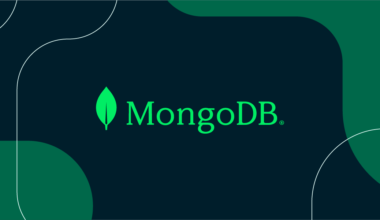Collaboration Platforms: A Treasure Trove for Cybercriminals In Cybersecurity
Collaboration platforms like Slack have become indispensable in modern corporate environments, facilitating seamless communication and efficient workflow management. However, their widespread adoption also makes them attractive targets for cybercriminals. The wealth of information exchanged on these platforms provides a treasure trove of opportunities for malicious actors aiming to exploit sensitive data.
As these platforms integrate more deeply into business operations, the potential entry points for cyber-attacks increase. This makes it crucial for organizations to understand the specific risks associated with using collaboration tools and to implement robust security measures.
The Growing Dependence on Slack in Corporate Environments
Slack has rapidly become a cornerstone of communication in many corporate environments. Its ease of use, coupled with powerful integration capabilities, has led to its adoption by organizations of all sizes. Teams rely on Slack for everything from casual conversations to sharing critical business information.
This growing dependence means that any vulnerabilities within Slack could have far-reaching consequences. As more sensitive data is shared and stored on the platform, the potential impact of a security breach becomes increasingly significant.
The Consequences of a Single Secret Leaked
The leak of a single piece of confidential information can have devastating consequences for an organization. Whether it’s intellectual property, financial data, or personal information, the exposure of sensitive data can lead to financial loss, reputational damage, and legal repercussions.
In the context of Slack, where information is continuously exchanged in real-time, the risk of accidental or intentional leaks is heightened. Ensuring that secrets are kept secure requires a proactive approach to cybersecurity and a thorough understanding of potential threats.
Identifying Key Cybersecurity Threats in Slack
Several key cybersecurity threats pose risks to Slack users. These include phishing attacks, where malicious actors attempt to deceive users into providing sensitive information, and malware infections that can compromise system integrity.
Additionally, insider threats, whether from malicious employees or inadvertent actions, can lead to data breaches. Understanding these threats is the first step in developing effective strategies to mitigate them.
The Increasing Volume of Sensitive Data in Corporations
Corporations are generating and handling more sensitive data than ever before. This includes proprietary business information, customer data, and internal communications. As the volume of this data grows, so does the responsibility to protect it from unauthorized access.
Platforms like Slack, while incredibly useful, must be managed with a keen eye on security protocols to ensure that sensitive information remains confidential and secure from potential breaches.
How Slack Data Breaches Can Occur and Their Impact
Data breaches in Slack can occur through various means, such as exploiting vulnerabilities in the platform, phishing scams, or through the actions of compromised user accounts. Once a breach occurs, the impact can be extensive, affecting not only the immediate victims but also the broader organization.
The fallout from a data breach can include financial losses, damage to brand reputation, and loss of customer trust. Understanding how these breaches can happen is crucial in developing robust defenses.
Best Practices for Enhancing Slack Security in Your Organization
Enhancing Slack security involves implementing a combination of technical measures and user education. Best practices include enabling two-factor authentication, regularly updating software, and using strong, unique passwords for Slack accounts.
Additionally, training employees on recognizing phishing attempts and the importance of safeguarding sensitive information can significantly reduce the risk of security incidents.
Enhancing Your Secrets Detection Boundaries
To protect sensitive information, organizations should implement advanced monitoring tools that can detect unusual activity and potential breaches. Setting up alerts for suspicious behavior and conducting regular audits of Slack usage can help identify and mitigate risks early.
Establishing clear policies on what constitutes sensitive information and how it should be handled within Slack is also crucial in maintaining security boundaries.
Future Trends in Protecting Communication Tools from Cyber Threats
As cyber threats continue to evolve, so too must the strategies and technologies used to protect communication tools like Slack. Future trends may include the increased use of artificial intelligence and machine learning to detect and respond to threats in real-time.
Additionally, advancements in encryption and secure communication protocols will play a pivotal role in safeguarding sensitive information against increasingly sophisticated cyber attacks.

Promoting Awareness of Confidential Information
Creating a culture of cybersecurity awareness within an organization is essential. Employees should be regularly educated on the importance of protecting confidential information and the best practices for doing so.
Regular training sessions, clear communication of security policies, and the promotion of a security-first mindset can all contribute to reducing the risk of data breaches and ensuring that sensitive information remains protected.
The Road Ahead: Staying Ahead of the Curve
As the digital landscape continues to evolve, staying ahead of cybersecurity threats requires constant vigilance and adaptation. Organizations must invest in ongoing cybersecurity training, stay informed about emerging threats, and continuously refine their security strategies.
By implementing these measures, organizations can better protect their sensitive information on platforms like Slack and maintain a secure, resilient communication environment.
Additional Keywords Integration:
This blog provides insights into cybersecurity risks associated with Slack, a critical concern for organizations relying on collaboration platforms. By understanding these risks and integrating best practices, businesses can safeguard their sensitive information. Explore how cyber security courses in Delhi, including online classes and certifications, can enhance your organization’s security posture. Consider enrolling in training programs from the best cyber security institute in Delhi to stay ahead of the curve in protecting your communication tools from evolving cyber threats.







